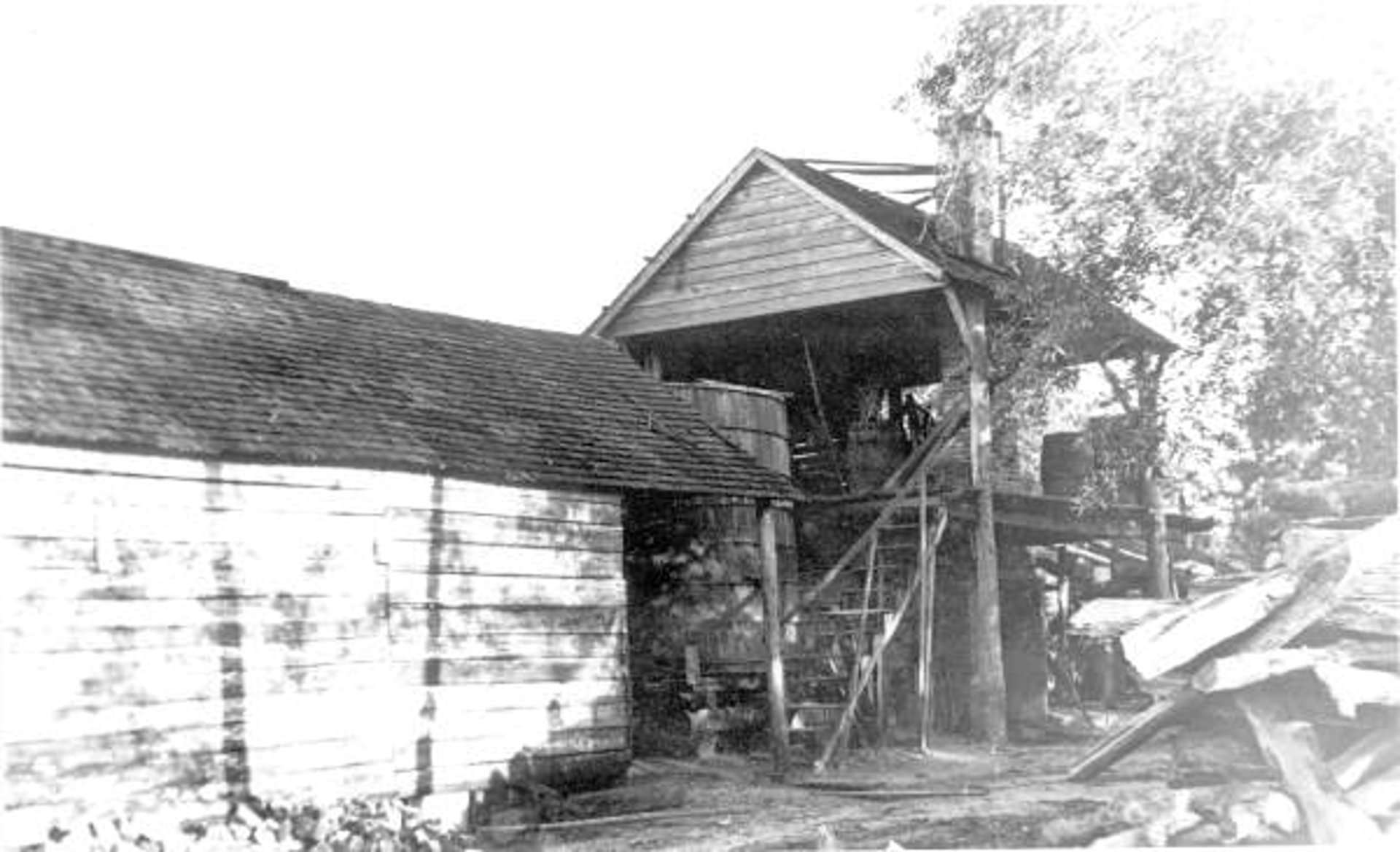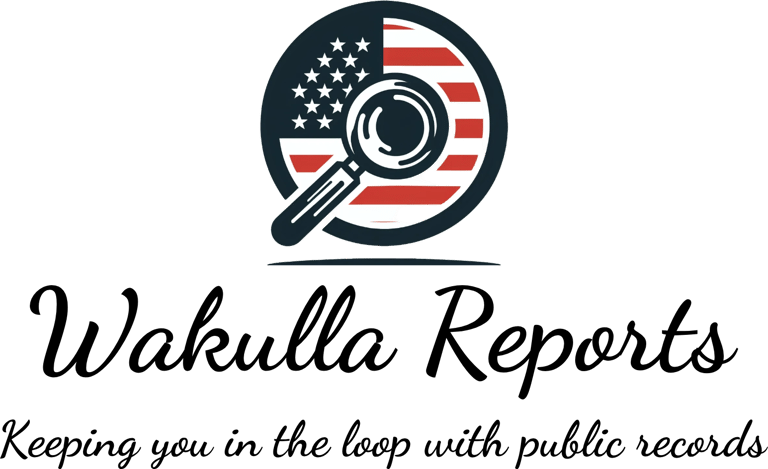Wakulla County’s 2024 Audit: The Good News and What It’s Not Telling You - Part 1 of 4
Wakulla County’s 2024 audit confirms accurate financial records but doesn’t reveal if your tax dollars were spent wisely or aligned with community priorities. This first post in a four-part series breaks down the audit’s findings and sets the stage for digging into spending, debt, and accountability.
MONEY & FINANCE2025
Bella Boyd
6/28/20257 min read


Wakulla County’s 2024 Audit: The Good News and What It’s Not Telling You
Hey, Wakulla County taxpayers! Ever wonder what happens to your tax dollars after they leave your wallet? Each year, Wakulla County gets a financial checkup—an audit—to make sure its money is tracked properly. The 2024 audit, covering the fiscal year ending September 30, 2024, just dropped, and it’s got some solid news: the county’s financial records are accurate and follow the rules. That’s a relief, right? But hold off on the high-fives. This audit doesn’t tell you whether the county spent your money on the stuff you actually care about, like fixing potholes, boosting sheriff patrols, or keeping parks open. It’s like getting a report card that says the math is correct but doesn’t mention if the homework was any good. Let’s unpack what this audit says, what it doesn’t, and why it matters to you. This is the first in a four-part series to help you get the full picture of your county’s finances.
The Good News: The Books Are Straight
The audit, done by independent pros, gave Wakulla County a “clean opinion.” In plain English, that means the county’s financial statements—think of them as a giant spreadsheet showing every dollar in and out—are trustworthy. These statements cover all the county’s operations, from tax-funded services like public safety and road repairs to fee-based stuff like sewers and landfills. The auditors dug through records, tested numbers, and confirmed everything lines up with standard government accounting rules.
Here’s what the audit tells us about the county’s financial health:
Net Position Grew: The county’s “net worth” (called net position) jumped by $25 million to $176.2 million. That’s assets (cash, roads, buildings) minus debts (loans, bills). A bigger net position sounds like a win—it means the county owns more than it owes.
Big Asset Investments: Most of that $176.2 million ($174.5 million, to be exact) is tied up in capital assets like roads, parks, and sewer systems. These are things the county uses to serve you, not cash it can spend freely.
Restricted Funds: Another $15.2 million is locked up for specific uses, like grants or special projects, so it’s not available for just anything.
Cash Crunch: Here’s a red flag: the county has a $13.5 million deficit in “unrestricted” funds—the flexible cash it can use for whatever comes up. This means they’re tight on extra money for new projects or emergencies, which could force tough choices down the road.
Overall, the county’s in decent shape financially, with a growing net position and lots of valuable assets. But that negative unrestricted cash is a warning sign—think of it like having a nice house but no savings for unexpected bills.
What the Audit Doesn’t Say (and Why It Matters)
Now, here’s the part you need to hear loud and clear: a clean audit doesn’t mean the county spent your money wisely. The auditors’ job was to check if the numbers add up, not to judge whether the county’s spending decisions were smart or matched what you, the taxpayer, want. They’re like referees making sure the game follows the rules, not coaches deciding the playbook. Here’s what the audit doesn’t tell you:
No Spending Report Card: Did the county overspend on a fancy park while ignoring crumbling roads? Did they fund a pet project instead of more sheriff deputies? The audit’s silent on that. It confirms money was recorded correctly, not whether it went to the right places.
Big Loan Questions: The county spent $15 million from a loan taken out in 2023, but the audit doesn’t say what it was for. Was it a critical fire station, a sewer upgrade, or something less urgent? You’d need to dig into budget reports to find out.
Community Priorities: If you’ve been shouting for better schools, safer streets, or more local jobs, this audit doesn’t check if the county listened. It’s about the math, not “the will of the people.”
This is a big deal. You’re footing the bill for county services, so you deserve to know if your taxes are being spent on what Wakulla residents want most. A clean audit is great for trust in the numbers, but it doesn’t clear the county of bad spending habits or prove they’re prioritizing your needs.
Why This Should Get Your Attention
Your taxes keep Wakulla County running—everything from fixing bridges to picking up trash. The audit’s clean opinion is a good start, meaning you can trust the financial snapshot. The $25 million boost in net position and a lower property tax rate (down from 8.2 to 7.9 mills) are nice, but that $13.5 million cash deficit and big loan spending raise questions. Are county leaders making choices that reflect what you want for Wakulla, or are they going their own way?
Locals are talking more about events like veterans’ ceremonies or sheriff updates than budget gripes. That doesn’t mean taxpayers aren’t curious—it might just mean the audit’s details haven’t hit the public radar yet. This series aims to change that by breaking it all down for you.
What’s Coming in This Series
We’re just getting started. Over the next three posts, we’ll dive deeper into:
Where Your Money’s Going: What’s behind that $15 million loan spending, and what does the county’s $57.1 million debt mean for your taxes?
A Big Red Flag: The audit found a serious gap in the county’s financial controls that could affect how your money’s managed.
How to Hold the County Accountable: Practical steps to make sure your tax dollars line up with Wakulla’s priorities.
Stick with us to get the full scoop on what’s happening with your money and why it matters. Stay sharp, Wakulla!
Additional Reading for Nerds and Bean Counters:
Sourced Numbers and Their Page References
Total Net Position: $176.2 million ($176,173,370)
Source: Management’s Discussion and Analysis, Page 4, under “Financial Highlights” and “Government-Wide Financial Analysis.”
Details: The MD&A states, “Wakulla County’s assets and deferred outflows exceeded liabilities and deferred inflows by $176,173,370 (net position).” This is also reiterated in the “Net Position” section, confirming the total net position at the close of the fiscal year ended September 30, 2024.
Net Position Breakdown:
Net Investment in Capital Assets: $174.5 million ($174,471,987):
Source: Management’s Discussion and Analysis, Page 4, under “Financial Highlights.”
Details: The MD&A specifies, “Of this amount, ($13,489,807) is unrestricted net position while $174,471,987 represents net investment in capital assets.” This figure reflects the county’s investment in assets like roads, buildings, and sewer systems, net of related debt.
Restricted Net Position: $15.2 million ($15,191,190):
Source: Management’s Discussion and Analysis, Page 4, under “Financial Highlights.”
Details: The MD&A notes, “The remaining $15,191,190 is restricted net position,” referring to funds constrained for specific purposes (e.g., grants or special projects).
Unrestricted Net Position Deficit: -$13.5 million (-$13,489,807):
Source: Management’s Discussion and Analysis, Page 4, under “Financial Highlights” and “Government-Wide Financial Analysis.”
Details: The MD&A explicitly states, “The County had an unrestricted net position deficit of $13,489,807 on September 30, 2024.” This negative figure indicates a shortfall in flexible cash reserves.
Net Position Increase: $25 million ($25,046,148):
Source: Management’s Discussion and Analysis, Page 4, under “Financial Highlights.”
Details: The MD&A reports, “Net position of governmental activities increased $12,420,716. Net position of business-type activities increased by $12,625,432 over the previous year. Accordingly, net position of both governmental and business-type activities increased a total of $25,046,148.” This confirms the overall financial improvement for 2024.
Loan Spending: $15 million:
Source: Management’s Discussion and Analysis, Page 5, under “Governmental Funds” and “Proprietary Funds.”
Details: The MD&A notes, “The General Fund had a decrease in fund balance of $13,135,563, primarily due to spending down $15 million in prior year loan proceeds” (Page 5, Governmental Funds). Additionally, under “Proprietary Funds,” it states, “As of September 30, 2024, total net position was $80,230,408, an increase of $12,625,432 from the prior year due to $15 million in prior year loan proceeds added to capital assets” (Page 5). These references confirm the $15 million loan spending for governmental activities and another $15 million for business-type activities (totaling $30 million from 2023 loans, as further detailed in the Notes to Financial Statements).
Supporting Source: Notes to Financial Statements, Page 31, under “Long-Term Liabilities” (Governmental Activities and Business-type Activities).
Details: The Notes specify, “The County has a note payable with the Florida Local Government Finance Commission which was issued during 2023. This loan requires annual variable interest payments with one final balloon payment for the principal of $15,000,000 due in 2028” for both governmental and business-type activities, confirming the $30 million total loan (split $15 million each).
Property Tax Rate Decrease: From 8.2 mills to 7.9 mills:
Source: Management’s Discussion and Analysis, Page 5, under “Next Year’s Budget and Significant Financial Conditions.”
Details: The MD&A states, “The Board of County Commissioners adopted a General Fund millage rate of 7.9000 mills for fiscal year 2024, which is 0.3000 mills lower than the millage rate of 8.2000 mills adopted for fiscal year 2023.”
Notes on Sourcing
All figures in the blog post were directly pulled from the provided documents, specifically the Management’s Discussion and Analysis (Pages 4–5) for the net position, its components, financial growth, loan spending, and tax rate, and the Notes to Financial Statements (Page 31) for additional details on the loan structure.
The numbers were rounded for readability in the blog (e.g., $176,173,370 to $176.2 million, $25,046,148 to $25 million) to keep it accessible for taxpayers, but I’ve included the exact figures above for precision.
The Independent Auditors’ Report (Pages 1–3) supports the clean opinion but doesn’t provide specific financial figures, so it wasn’t directly cited for numbers. It confirms the audit’s scope and reliability, which I used to frame the “clean opinion” in the blog.

Additional Social Links
YouTube is your go-to for short clips, video explainers, and visual breakdowns of how Florida and Wakulla governments really work.
Facebook brings you bite-sized written content, sticky-note facts, and rolling updates you can share and discuss.
Prefer to browse at your own pace?
Bookmark our website and visit anytime for fresh posts, resources, and real-life examples from right here in Wakulla County.
© 2024. All rights reserved.
